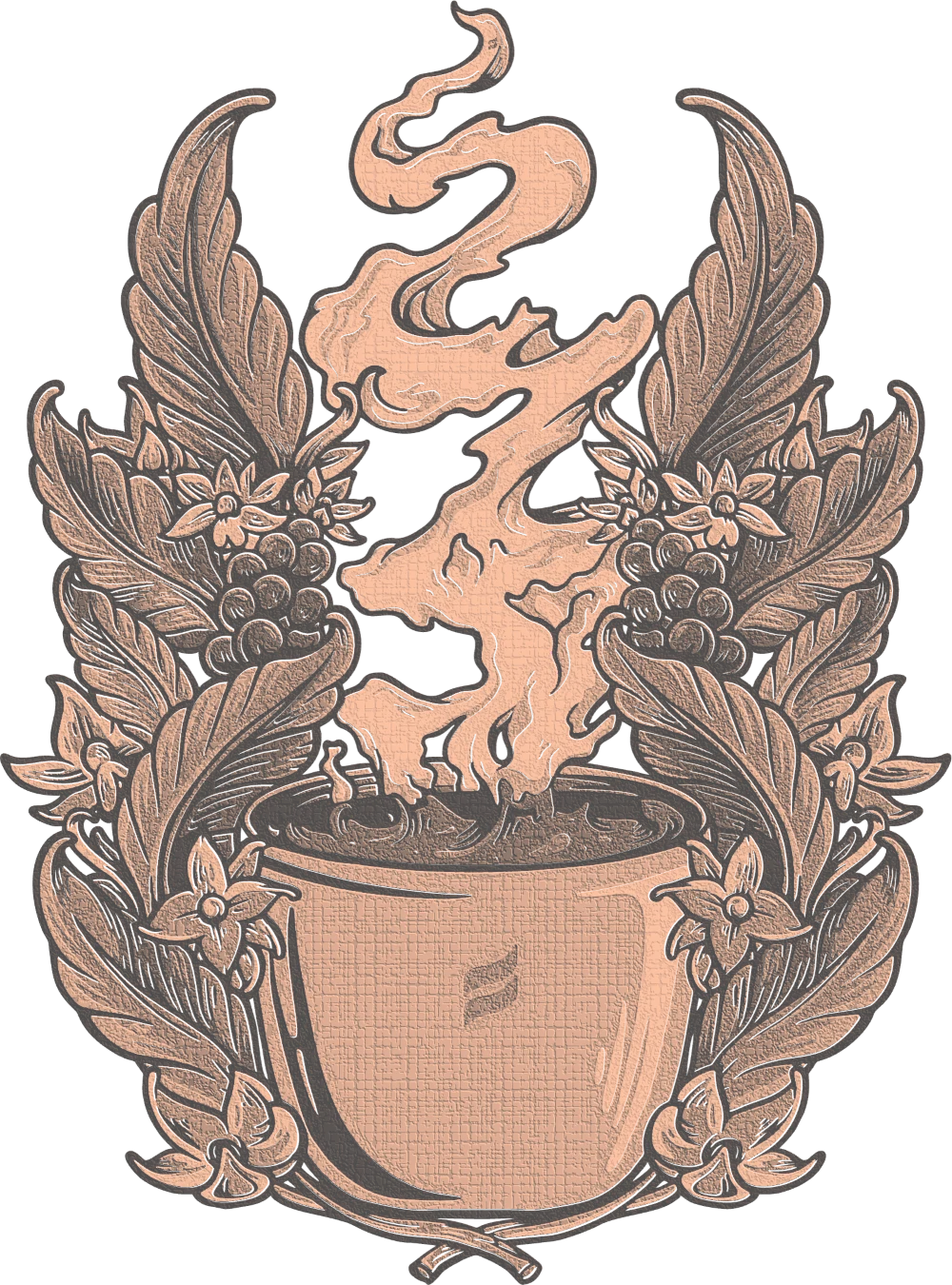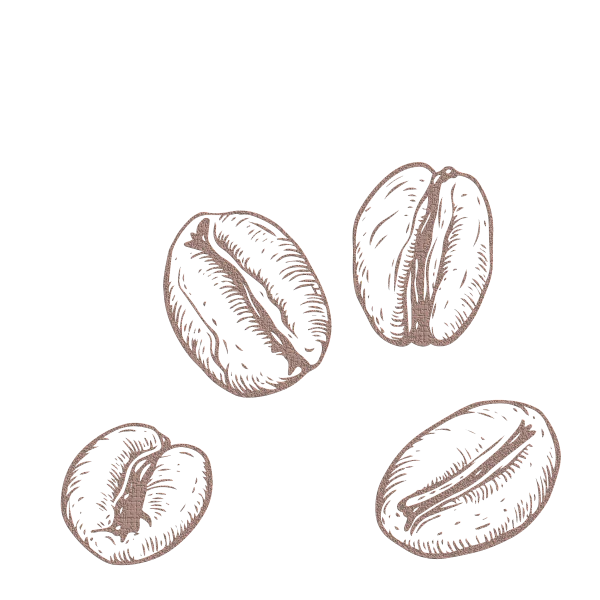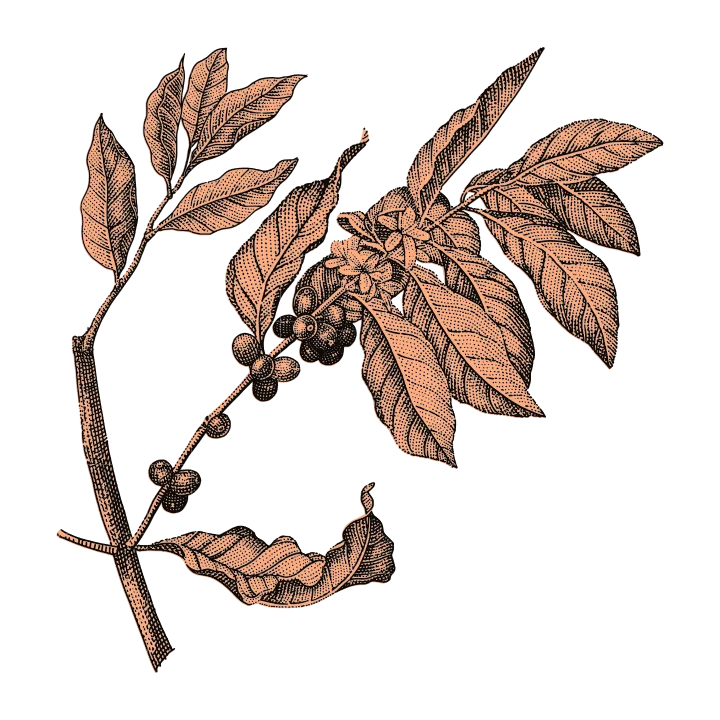

Product Line

A Dream of L’Extrême-Orient
Introduction
Weasel Coffee
by Honee Coffee
A specialized product line featuring the use of Weasel Coffee as the main ingredient.
Weasel Coffee, known by various names such as Luwak Coffee, Civet Coffee or Chồn Coffee, is a legendary coffee brew formed through a unique process involving the Asian palm civet. These small animals consume the coffee cherries as they ripe, and through the digestive process, the beans went through an exceptional transformation to create the final unique exceptional coffee taste.
This product line is highly limited in quantity due to its extremely low production volume.
Asian Palm Civet
Though commonly referred to as weasels (or Chồn) in Vietnam, these creatures are actually more closely related to mongooses known as the Asian palm civet or toddy cat (scientific name: Paradoxurus hermaphroditus).
DISTRIBUTION
Asian Palm Civets are scattered throughout South Asia and Southeast Asia, particularly in prominent locations such as Indonesia, the Philippines, and Vietnam.

History of
Civet Coffee
The Legendary Flavor Tale
Civet coffee, first known as Kopi Luwak, traces its origins back to Dutch plantations in Indonesia in the 1830s.
Genesis
The history of civet coffee begins in Dutch coffee plantations in Indonesia over 300 years ago. Coffee cultivation in Indonesia started in the late 17th century and began to be exported to Europe in the early 18th century.
However, the Dutch economy faced significant challenges due to the impact of conflicts between 1800-1837, especially the Java War, which inflicted heavy losses on the Netherlands despite lasting less than 5 years. In the aftermath of this war, to recover from the losses, the Dutch implemented the “Cultivation System” (Cultuurstelsel) policy, forcing farmers to stop growing other fruit crops and focus solely on coffee cultivation. One coercive measure included prohibiting farmers from picking coffee cherries for personal use.
As this law became increasingly stringent, people started to notice coffee beans appearing in the feces of civets. They began to search for and process these coffee beans, treating them like regular coffee beans – and thus, civet coffee was born.
Naturally, plantation owners questioned the farmers for using coffee, which was prohibited. They explained the existence of this unique coffee produced by civets consuming coffee cherries and highlighted the its impressive flavor. As a result, civet coffee quickly gained popularity despite its unconventional origin.
Becoming a Legend
The popularity of civet coffee spread to neighboring regions, reaching Europe and becoming a legend in the early 20th century. However, with its limited production, the price of civet coffee has steadily risen, making it the most expensive coffee that money can buy.
Development in Vietnam
In Vietnam, there is no specific documentation pinpointing the exact time when civet coffee emerged. It is only known that this legend began somewhere in the early 20th century, within the vast coffee plantations of the Central Highlands. Perhaps during this time, as plantations flourished, the civet species in this area became acquainted with a new food source – coffee cherries. Similar to Indonesia, local farmers began collecting the excreted coffee beans, cleaning, processing, and transforming them into a unique type of coffee.
However, there were moments when this coffee seemed to disappear in Vietnam. It was only faintly heard of, with rumors floating around. This could be attributed to various factors such as shrinking forest areas due to cultivation demands, widespread hunting of wild animals, and more.
Nevertheless, after a period of obscurity, the civet coffee industry experienced a revival from the early 2000s, with the emergence of numerous renowned civet coffee farms.
As You May Already Know
What Makes Civet Coffee Flavour Special
The Asian Palm Civet is an omnivorous species, primarily consuming various plants, with only a small portion being animals or insects. Remarkably, nearly 90% of their diet consists of fruits. Being selective eaters, they not only choose ripe fruits but also opt for the sweetest ones. Due to this gourmet eating habit, civets were once considered pests as they would often “steal” the best and sweetest fruits from orchards and coffee plantations.
After consuming coffee cherries, the Asian palm civet excretes the beans encased in a tough husk along with a small amount of fruit pulp. During digestion, the coffee beans undergo natural fermentation influenced by stomach acid and digestive enzymes, resulting in a unique and naturally fermented process.
Once these coffee beans are carefully collected and meticulously cleaned, despite undergoing some basic processing steps, it becomes evident that the Asian palm civet‘s digestive process imparts a noticeable difference in quality compared to other beans.

WHY THE ASIAN PALM CIVET?
Other species of civets typically chew and crush coffee beans. In contrast, the Asian Palm Civet has the habit of gently chewing and swallowing the beans, selectively digesting only the fleshy part of the coffee fruit and excreting the undigestible hard husk.
CRUCIAL ROLE IN THE ECOSYSTEM
With this non-chewing behavior, asian palm civets play a crucial role in dispersing coffee seeds.
SOME STUDIES ON CIVET COFFEE
In Marcone’s study (2004), the phenomenon of endogenous digestive enzymes permeating the coffee beans was explained, leading to the breakdown of proteins and the creation of shorter peptides and free amino acids. They concluded that this process reduces bitterness and has the potential to influence the flavor.
Amino acids play a significant role in the Maillard process, generating compounds that directly impact the coffee flavor. Muzaifa and colleagues (2019) conducted an in-depth study on amino acids in civet coffee, noting clear differences in the quantities of various amino acids, such as cysteine and glutamic acid.
Furthermore, the diverse diet of civets, which may include up to 31 different types of fruits, as mentioned in the study by Su Su & Sale (2007), also has some influence on the quality of coffee.
⚝
A BIT OF BIOLOGY
Structure of Coffee Bean
Inside the coffee fruit, beneath the outer skin and flesh, the coffee bean is enveloped by two additional layers:
- Silver Skin: This thin layer is formed from fiber.
- Parchment Layer: Formed by three to seven layers of hard and progressively denser fiber cells as the fruit ripens.
𓆰

FOOD SAFETY HYGIENE
Is Civet Coffee Contaminated?
With the hard parchment layer encasing the coffee bean, it is entirely separated from external impurities. The parchment is only removed after thorough external washing.
Additionally, common roasting methods involve temperatures ranging from 196°C to 224°C, corresponding to the first and second crack stages in coffee roasting techniques. This temperature range effectively eliminates any remaining bacteria.
Despite numerous studies throughout history, the fermentation mechanism of civet coffee remains a mystery. The difference between coffee consumed by civets and other similar varieties has been demonstrated in various studies.
HIGHLIGHT
The Platform of Flavor
The fermentation process creates the sublime flavors of the selected coffee cherries. However, this is not an all-encompassing process; the quality of coffee beans is still influenced by the following factors:
⸙͎

Origin
Varieties
Arabica and Robusta are the two most well-known coffee species. Each species comprises various cultivars and varieties, leading to diversity in the characteristics of coffee beans.
ᨒ
Environment
Growing Region
This is an indispensable factor as it determines the coffee plant’s growth, fruit, and coffee bean quality. Different regions have different soil compositions, climates, and elevation levels, all crucial factors for coffee cultivation.
𖤓
Human Factor
Farming Practices
Directly impact coffee plants and their quality. Through various specific techniques such as pruning, fertilization, and cultivation methods like organic or natural farming, farmers unlock the value in coffee beans.
Civet Coffee Flavour
Proper care for coffee plants and suitable growing regions enhance the quality of coffee beans and the enhancement through the fermentation process during digestion by civets makes them even more valuable.
Civet coffee is often evaluated to have superior taste compared to regular coffee of the same type. It typically has lower caffeine content, acidity, bitterness, and increased smoothness. It offers a good balance with a wild sensation and a distinctive earthy aroma.
A bit about
The controversies surrounding civet coffee
Initially, civet coffee was naturally harvested, but with increasing demand and value, civet farms were established to meet the demand. From here, issues of animal exploitation emerged, sparking a wave of opposition against the consumption of civet coffee.
The movement against civet farming is growing stronger alongside the increasing demand for consumption, yet there hasn’t been a satisfactory solution. As civet coffee has become a cultural phenomenon, the anti-farming movement leans closer towards extremism, denying the wonders of this type of coffee altogether.
Driven by these opposing forces, various parties have made different efforts to meet the growing demands for change. Researchers provide meticulous analyses of every aspect of the issue (from coffee composition to civet behavior); farmers enhance farm conditions and nutritional regimes based on experience and guidance from agricultural experts; producers strive to find alternative fermentation methods, creating products with similar characteristics…
Explore
Weasel Coffee
from Honee Coffee
✦

Legend Flavour &
A Dream of
L’Extrême-Orient
Originating from this region, civet coffee carries within it a mystical allure that delicately dances on the palate. Like a fleeting touch, it dissolves effortlessly, like fragile threads connecting us to distant, profound realms.
And as the flavor gently fades like a waking dream, what remains is something uniquely personal to each individual.
crafted to uphold a unique coffee culture and kindle inspiration for transcendent values…
[ SKU: hqCHON70 ]
[ SKU: hqCHON70 ]
Weasel Coffee by Honee Coffee
The Sole Product
As our sole civet coffee product, the ingredients are sourced from the renowned coffee regions of Vietnam: Dak Lak & Lam Dong.
A Dream of L’Extrême-Orient
A bit of heartfelt sharing about
Civet Coffee
& Its Historical Imprint
Civet coffee is always remembered for its legendary flavor that has enchanted generations. After more than a hundred years, the mysteries decorating the experiences have gradually unfolded, yet this not only doesn’t overshadow the enchantment of this type of coffee but also evokes new feelings with ancient legends.
And not only that, understanding more about civet coffee, we understand more about the echoes of history where bitterness permeates through the flow of time but cannot erase the tiny sweetness within.